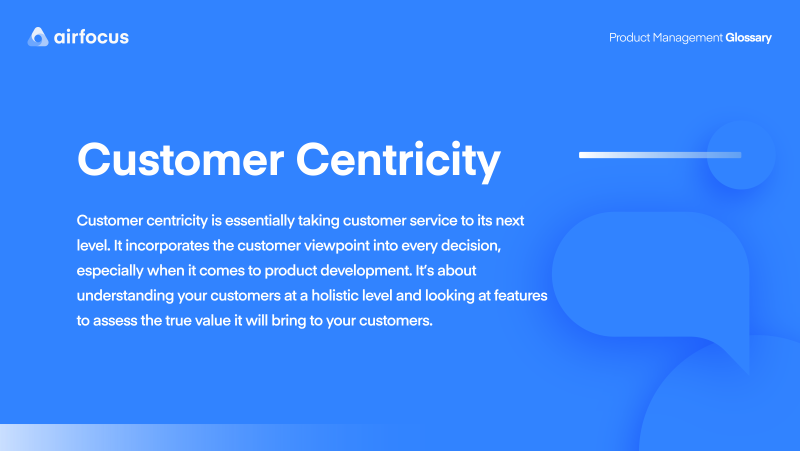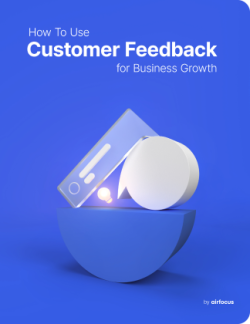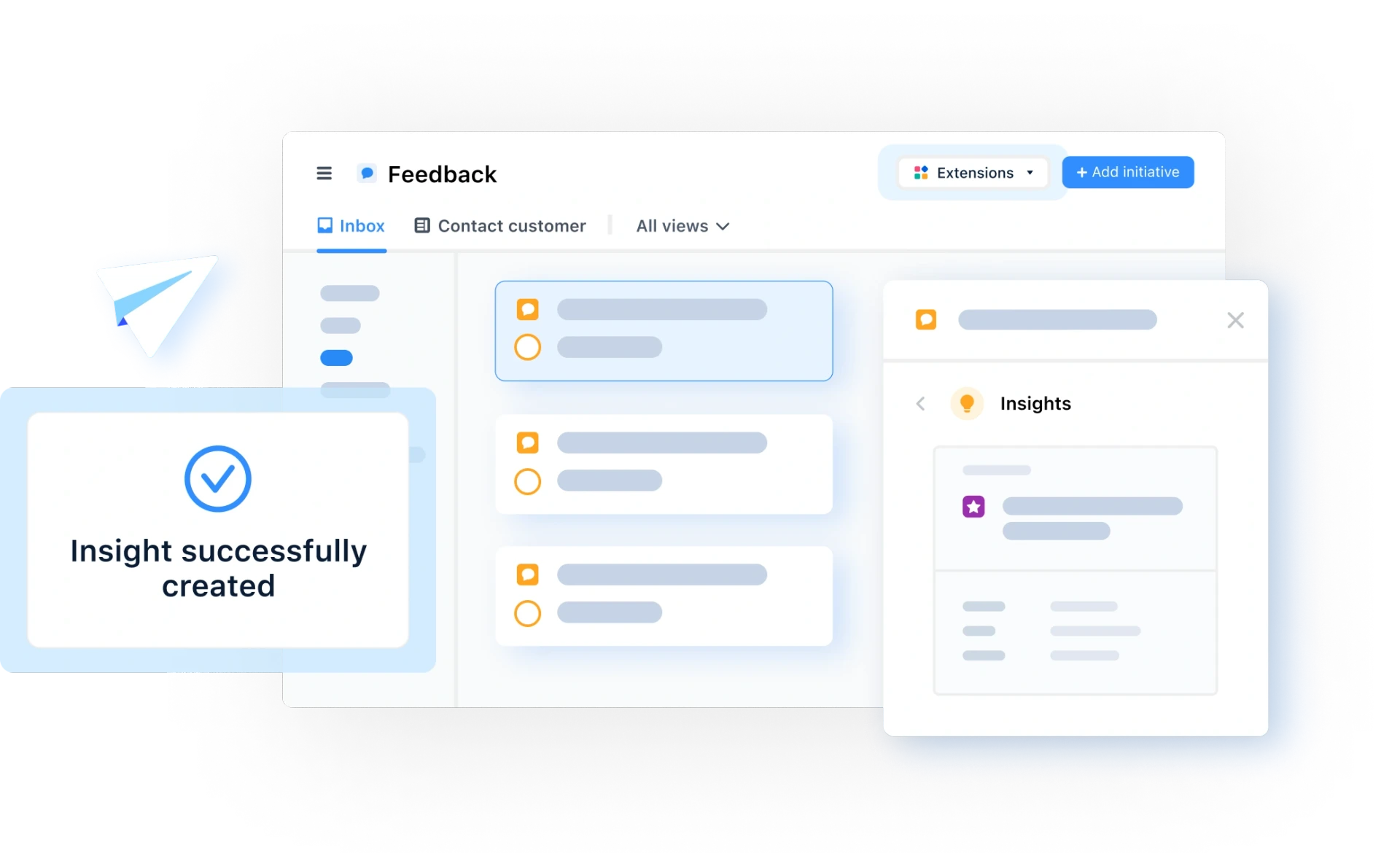Customer Centricity
What does customer centricity mean?
What does customer centricity mean?
Customer centricity definition - is the act of putting the customer at the forefront of every decision you make while developing a product. It’s about understanding your customers at a holistic level and looking at features to assess the true value it will bring to your customers.
Examples of customer centricity 3M
One of the best examples of customer centric development and the benefits it brings is the company 3M. Despite being involved in a wide variety of markets, their products tend to be in the best sellers no matter what they produce. The secret? A truly customer-centric attitude.
Not only did 3M immerse themselves in the customer’s mindset, they decided to open up their development processes to the customers with their Innovation Centers. These Innovation Centers provide customers with a space to collaborate on product design and test out new products. In return, 3M gains valuable feedback from the people that actually use their products, which allows them to continue offering relevant products and services.
Download Now: Get our 5-minute guide on Why Insights Are Essential and How to Source Them
Salesflare
Salesflare is one of the biggest CRM platforms in the world, and it’s easy to see why.
Their development team noticed issues with accessibility with other CRM platforms and set out to provide an easier way of doing things. To do this, Salesflare put themselves in the shoes of their customers during every step of development. They used customer feedback to identify roadblocks and pain points, resulting in a clean and clear platform with a frictionless onboarding process.
This attention to detail, when it comes to their customers' needs, launched Salesflare to whole new levels, yielding great reviews and a huge customer base.
How do you achieve customer centricity?
You may think that customer centricity is as simple as a feedback form on your website. Yet, it’s not enough to simply hear customer issues and suggestions, you have to act on them. Immerse yourself in their journey and truly understand what it means to be a customer using your product.
Here are some quick and easy steps to get you started on your journey to customer centricity:
Listen to your customers
Yes, we have said this already but it bears repeating, as it’s essential if you want to embrace a customer centric culture. It’s not enough to simply hear your customers, you have to listen and act on their feedback.
Download Now: Get our 5-minute guide on Why Insights Are Essential and How to Source Them
You can throw survey after survey at your customers, but if you’re not doing anything with that information, you’re going to gain nothing. Worse still, your customers will realize you’re not acting on their suggestions and stop providing feedback altogether. After all, if you’re not considering their voice, where is the incentive for them to speak up?
Make your customers part of the solution
There’s little use in assuming what your customers might think or want. If you’re truly wanting to promote a customer centric culture within your business, you need to involve the customer as much as possible. Got an issue with website flow? Is your product not ticking the boxes it should? Simply ask your customers what they would expect or recommend.
Map your customer’s journey
When switching to a customer centric culture, you’re going to hear the phrase “walk in their shoes” often. While that may become tedious, it’s important to keep that phrase in mind. By mapping a customer’s journey, you can experience your product as if you were a customer rather than a developer. This will allow you to see pain points or identify missing features you may have missed during standard testing.
Why is customer centricity so important?
You only need to take a look at the likes of Trader Joe’s, Sephora, and Amazon to see the benefits of a customer centric culture. Having a business model that revolves around customer centricity helps the organization to achieve a positive and personalized experience for its customers. This in turn boosts customer satisfaction, and most importantly, sales figures.
What's the difference between customer centricity and customer service?
Customer service is the act of assisting customers with anything and everything they need. Customer centricity is essentially taking customer service to the next level by creating a two-way street for businesses and their customers to interact and exchange ideas with the purpose of improving products.

General FAQ

Glossary categories
All product feedback in one place

Experience the new way of doing product management








